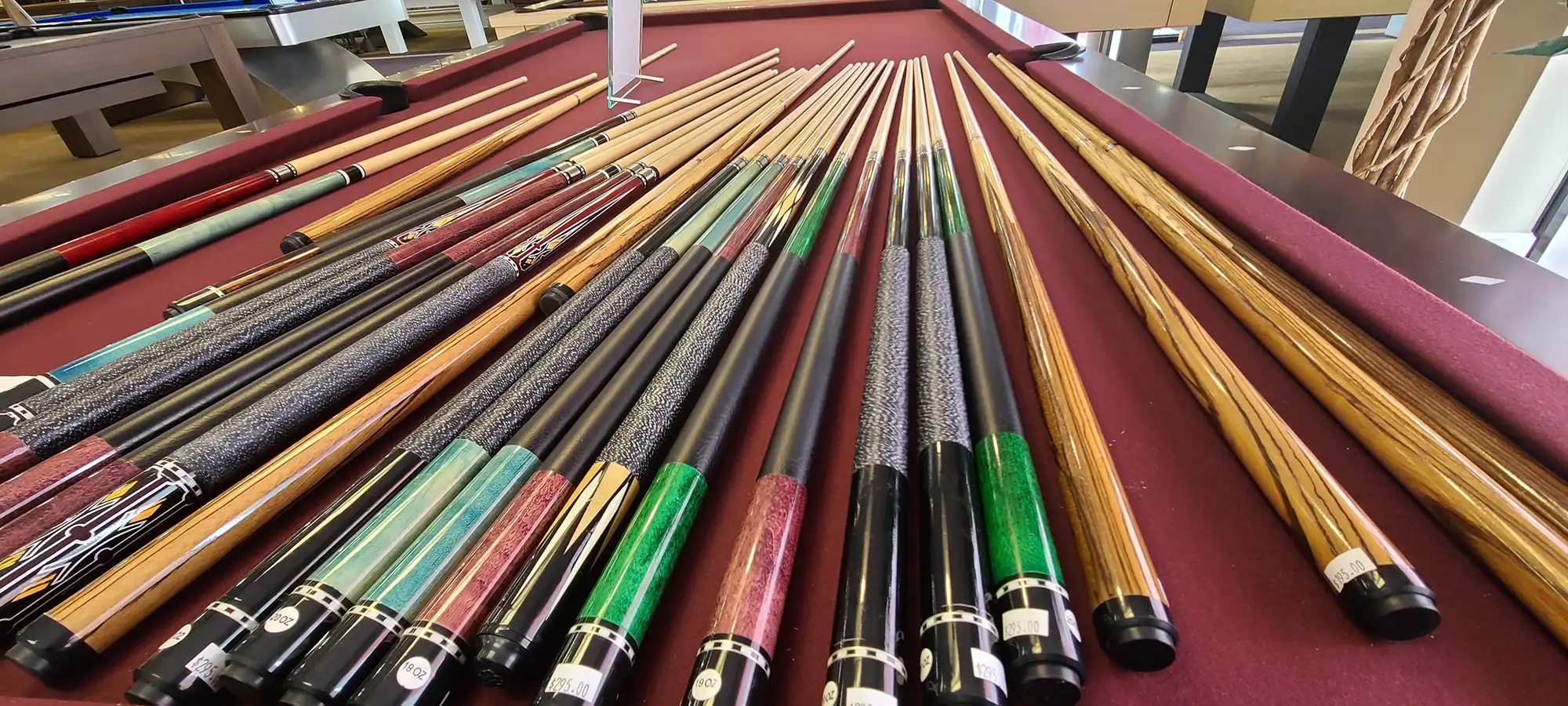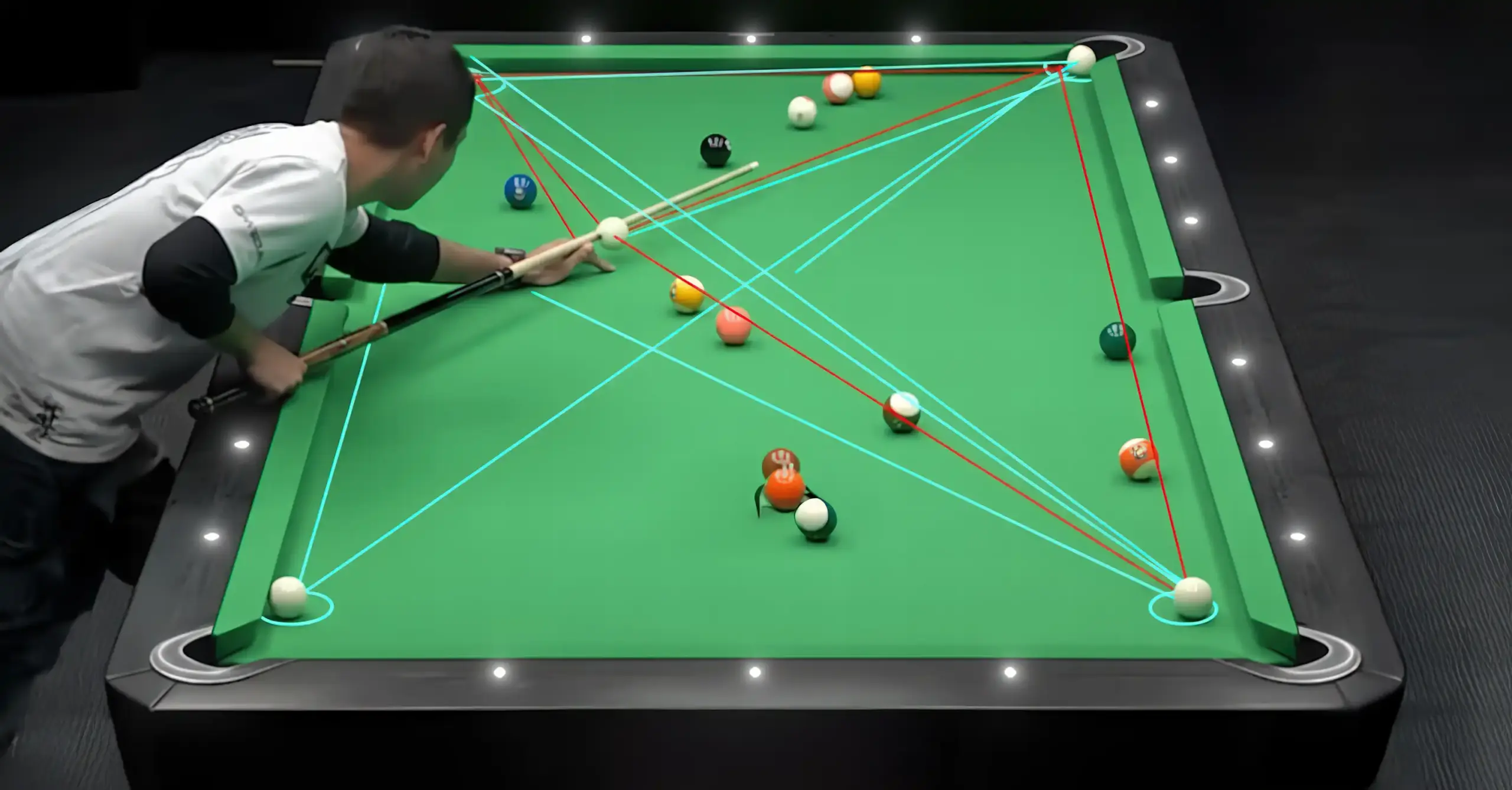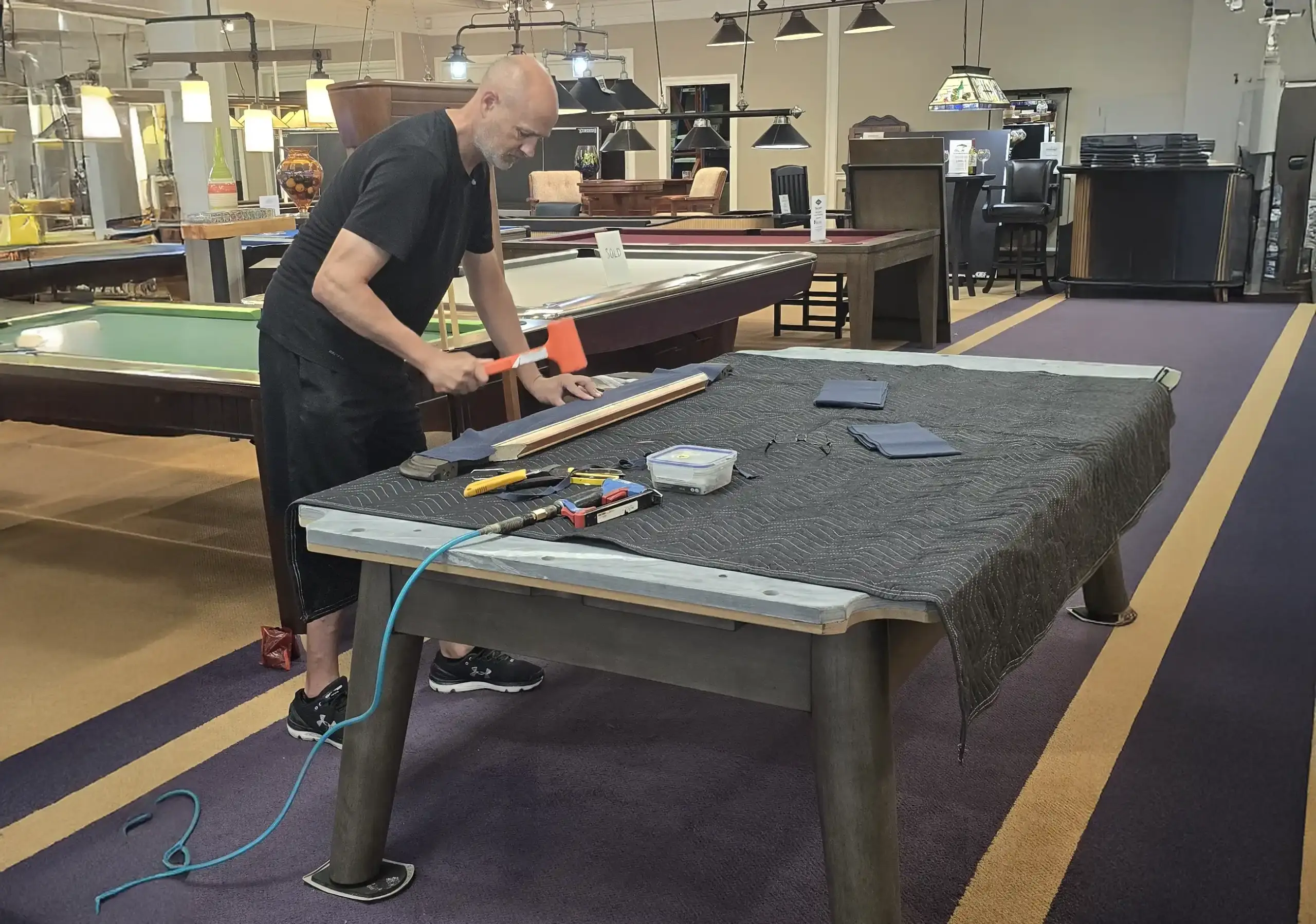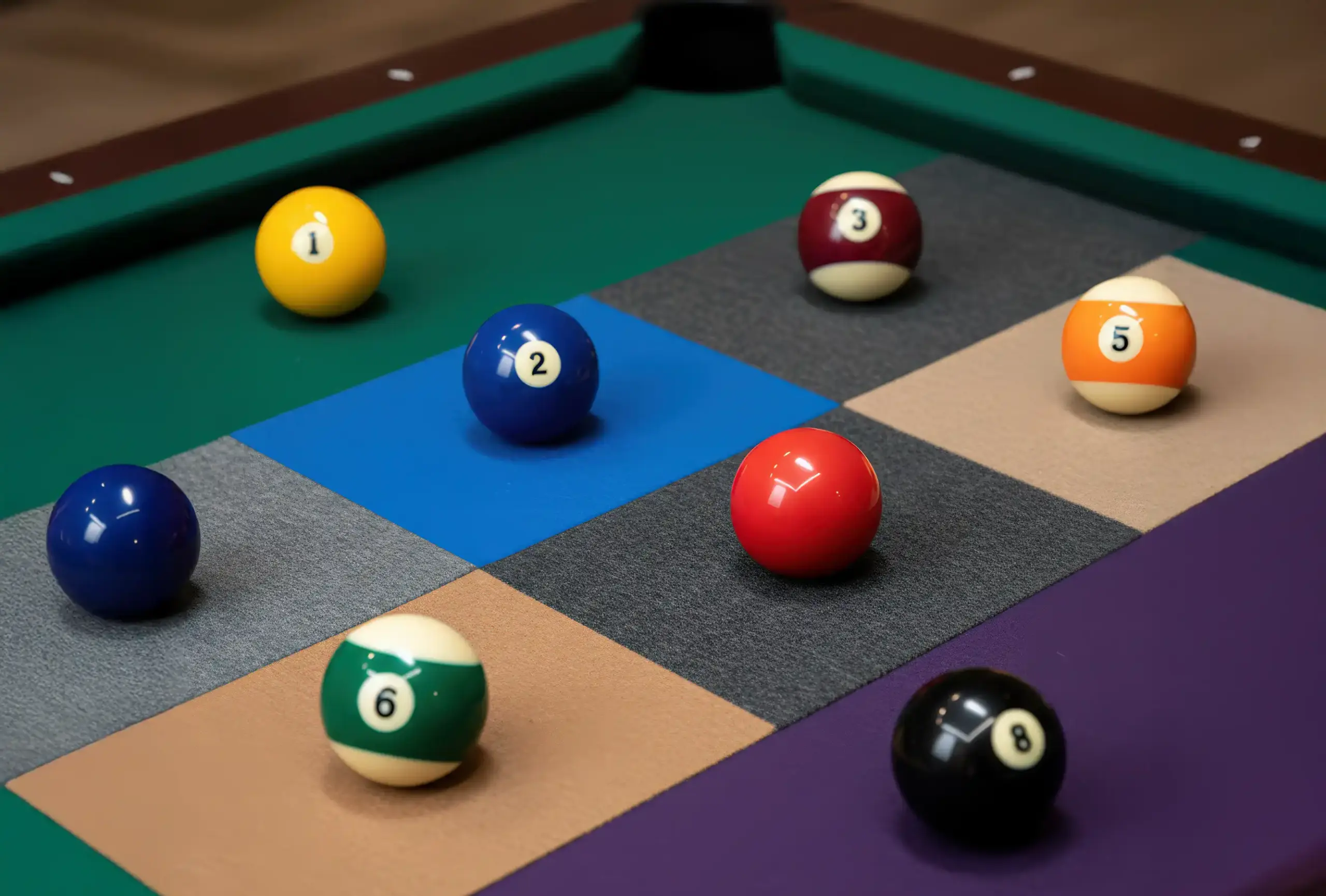Introduction
Have you ever lined up the perfect shot, felt confident in your stance and stroke, only to watch the cue ball drift just slightly off its intended path, resulting in a frustrating miss? Many players attribute every missed shot to a flaw in their technique, spending countless hours practicing without seeing the improvement they expect. While skill is undeniably the most important factor in pool, this frustrating gap between intention and result often isn’t just about the player. The problem could be hiding in plain sight: the quality of your pool cue. A cue is not just a stick; it’s a piece of precision equipment. Understanding how quality pool cues are engineered for pool cue accuracy can fundamentally change your approach and elevate your entire game.
Key Takeaways
- Low-Deflection Shafts Reduce Aiming Complexity:
The most significant technological improvement for pool cue accuracy is the low-deflection (LD) shaft, which minimizes cue ball squirt and simplifies aiming when using sidespin.
- Tip Condition is Critical for Control:
The hardness, shape, and texture of your cue tip directly impact energy transfer, spin application, and miscue reduction, making consistent tip maintenance essential for predictable shots.
- Weight and Balance Dictate Stroke Stability:
A cue’s weight and balance are personal to the player; finding the right combination promotes a smoother, more confident, and repeatable stroke, which is the foundation of accuracy.
- Precision Construction Ensures Consistency:
High-quality cues are built from superior materials like cured maple or carbon fiber and are engineered to be perfectly straight and durable, eliminating equipment-induced errors.
- Proper Maintenance Preserves Performance:
A quality cue’s accuracy-enhancing features can be negated by poor care. Regular cleaning, proper storage, and tip maintenance are crucial for long-term precision.
What Is the Basic Physics Behind an Accurate Pool Shot?
To understand how a cue improves your game, you first need to grasp what happens when you strike the ball. A pool shot is a sequence of energy transfers governed by physics. Your stroke transfers kinetic energy to the cue ball, and the efficiency of this transfer determines the ball’s speed and momentum. When the cue ball hits an object ball, that energy and momentum are transferred again in a near-perfectly elastic collision, sending the object ball toward the pocket.
However, advanced play requires more than just straight-line shots; it requires spin. By striking the cue ball off-center—above for topspin (follow), below for backspin (draw), or to the side for sidespin (english)—you introduce rotation. This spin is what allows for precise position play, but it also introduces a major challenge to pool cue accuracy: cue ball deflection, or “squirt.” When you apply sidespin, the mass of the cue shaft pushes the cue ball slightly offline in the direction opposite the spin. Players must learn to compensate for this squirt by adjusting their aim, a complex skill that is a primary source of missed shots.
How Do a Cue’s Components Affect Pool Cue Accuracy?
A pool cue is a system of interconnected parts, and each one plays a role in performance. The quality and design of these components are what separate a basic cue from a precision instrument. For a complete overview, a detailed pool cue buying guide can be a valuable resource.
The Tip and Ferrule: Your Point of Contact
The tip is the only part of the cue that touches the ball, making it critical for control and energy transfer. Tips range from soft to hard, each offering trade-offs. Soft tips are often perceived as enhancing spin, while hard tips offer more durability and efficient energy transfer.
Pool Cue Tip Hardness Trade-offs
| Hardness Level | Primary Accuracy Benefit | Key Trade-off |
| Soft | Good feel for finesse and delicate touch shots. | Prone to mushrooming and requires frequent maintenance. |
| Medium | Versatile, all-around performance with reasonable durability. | A balance that doesn’t maximize any single attribute. |
| Hard | High consistency, durability, and efficient power transfer. | Less forgiving on mis-hits; requires proper chalking. |
| Phenolic | Maximum power transfer for break shots. | High miscue risk on spin shots; poor finesse control. |
The ferrule, the piece just below the tip, reinforces the shaft, protects it from splitting, and helps absorb impact shock, contributing to the shot’s overall feel and consistency.
The Shaft: The Engine of the Cue
The shaft is the engine of pool cue accuracy. Traditionally made from high-grade, cured North American hard rock maple, modern shafts are also crafted from materials like carbon fiber. Carbon fiber offers exceptional durability, resistance to warping, and, most importantly, allows for the engineering of low-deflection properties. A great example of this modern technology is a carbon fiber infused solid shaft. The shaft’s taper—how its diameter changes from tip to joint—also affects feel. A “pro taper” maintains a consistent diameter for a longer distance, providing a uniform feel for your bridge hand.
The Joint, Butt, and Wrap: The Foundation for Your Stroke
The joint connects the shaft and butt, and a high-quality connection ensures the cue feels and performs like a single, solid unit. The butt provides the cue’s foundation and is often where exotic woods and intricate inlays are used to add weight and aesthetic value. The wrap material—be it traditional Irish linen, tacky leather, or a synthetic sport grip—provides a secure gripping surface, which boosts confidence and stroke consistency.
What Are the Hallmarks of a High-Performance Cue?
High-performance cues are defined by their materials, construction, and technology. These elements work together to create a tool that is more forgiving and predictable, directly enhancing pool cue accuracy.
Superior Materials and Precision Construction
Quality begins with the raw materials. For wood cues, this means using high-grade, straight-grained maple that has been properly cured and aged to prevent warping. For modern cues, it means using advanced composites like carbon fiber. The construction process must be meticulous. A high-performance cue is perfectly straight, features a seamless joint fit, and has a smooth, durable finish that glides effortlessly through your hand. This precision eliminates inconsistencies in the equipment, allowing you to trust that the cue will perform the same way every time.
The Low-Deflection (LD) Revolution
The most important technological advancement for pool cue accuracy is the low-deflection shaft. By reducing the mass at the tip-end of the shaft (known as “end mass”), manufacturers drastically reduce the amount of cue ball squirt. This is achieved by hollowing out the shaft’s tip, using lighter ferrule materials, or constructing it from inherently light materials like carbon fiber. The practical benefit is immense: you no longer need to make large, difficult-to-judge aiming adjustments when using sidespin. This makes position play more intuitive and accurate.
Why Do Pool Cue Weight and Balance Matter?
While technology impacts ball physics, the cue’s overall weight and balance impact the player’s mechanics. Most playing cues weigh between 17 and 21 ounces. Lighter cues are often seen as better for finesse, while heavier cues can feel more stable. The balance point affects how the weight is distributed. Ultimately, the ideal weight and balance are highly subjective. A cue that feels like a natural extension of your arm promotes a smooth, repeatable stroke, which is the cornerstone of accuracy. Quality cues, like those from Brunswick, often feature adjustable weight systems to help you find that perfect feel.
How Can I Maintain My Cue for Peak Performance?
A high-quality cue is an investment in your accuracy, but that investment must be protected through proper pool cue maintenance. Neglecting your cue will degrade its performance features.
First, focus on the tip, as it requires the most frequent attention. You must maintain its rounded, convex shape (a dime or nickel radius is standard) using a shaping tool. You also need to scuff the surface regularly to ensure it holds chalk, which provides the friction needed to prevent miscues.
Second, keep the shaft clean and smooth. Oils from your hands and chalk dust create a sticky feeling that can disrupt your stroke. Wipe the shaft with a microfiber cloth after playing. For wood shafts, burnishing with a piece of leather can seal the wood’s pores, creating a slicker surface.
Finally, proper storage is essential to prevent warping. Never lean your cue against a wall for long periods. Store it in a dedicated cue rack or a protective case and avoid leaving it in places with extreme temperature or humidity changes.
Which Quality Pool Cue Brands Should I Consider?
At Pool Table Store, we carry a curated selection of brands known for their commitment to quality construction and pool cue accuracy. When considering your options, several names stand out for their unique strengths and contributions to the game.
For players who appreciate a blend of traditional craftsmanship and modern performance, Pechauer Cues is a respected American brand known for its handcrafted quality and custom options. They emphasize precision engineering and offer their own low-deflection shaft technology, like in the Pechauer JP01-S model. Another brand with a long history of innovation is Viking Cues, known for a solid feel and reliable performance. Their range of cues, including the popular Valhalla line, provides excellent playability and durability, making them a fantastic choice for players looking to invest in their first serious cue.
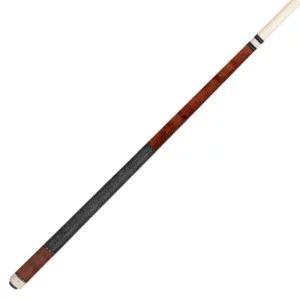
Representing the cutting edge of accuracy-enhancing technology is Cuetec Cues, a leader in composite technology. Famous for their Cynergy carbon fiber shafts, developed with input from professional players, Cuetec cues are designed for maximum durability, warp resistance, and ultra-low deflection. Finally, as a cornerstone of the billiards industry, Brunswick Cues is a name synonymous with quality. Their cues are built with high-quality materials, often feature adjustable weight systems, and are backed by a lifetime warranty, reflecting a deep commitment to performance and customer satisfaction.
Frequently Asked Questions (FAQ)
What is the fastest way to improve pool cue accuracy?
- The fastest way to improve accuracy is to combine practice with equipment that minimizes variables. Switching to a low-squirt shaft can have an immediate and noticeable impact by simplifying aiming on shots with sidespin.
Does a heavier pool cue improve accuracy?
- Not necessarily. Accuracy comes from a consistent stroke, which is best achieved with a cue weight and balance that feels most comfortable and natural to you. A heavier cue has more inertia and may feel more stable to some, while a lighter cue may offer better touch and finesse to others.
How much does cue tip hardness affect accuracy?
- Cue tip hardness affects the feel of the shot and energy transfer. Harder tips are more durable and transfer energy efficiently, while softer tips are perceived to offer better spin control. Accuracy is best served by a high-quality layered tip that holds its shape and is properly maintained to prevent miscues.
Is a carbon fiber shaft more accurate than a wood one?
- Carbon fiber shafts generally offer lower deflection than traditional maple shafts, which makes them inherently more forgiving when applying sidespin. They are also more resistant to warping and dings. While many professionals now use carbon fiber for its consistency, a high-quality, low-deflection maple shaft can also be exceptionally accurate.
Conclusion
The path to becoming a more accurate pool player is paved with practice, but it’s crucial to recognize that your equipment is part of the equation. A quality pool cue is not a luxury; it is a tool engineered to make you more consistent. By minimizing cue ball deflection, providing a stable and predictable stroke, and ensuring efficient energy transfer, a well-made cue removes variables that cause frustrating misses. It allows your skill and technique to be the deciding factors in every shot.
Investing in a cue from a trusted brand like Pechauer, Viking, Cuetec, or Brunswick is an investment in your own potential. When you use a cue that is built for precision and tailored to your personal feel, you gain the confidence to execute shots you once thought were out of reach. By understanding the science and embracing the technology, you can bridge the gap between your intention and the result, unlocking a new level of accuracy in your game.
For professional advice on selecting the right cue to improve your pool cue accuracy, contact Pool Table Store in the Toronto area today.

